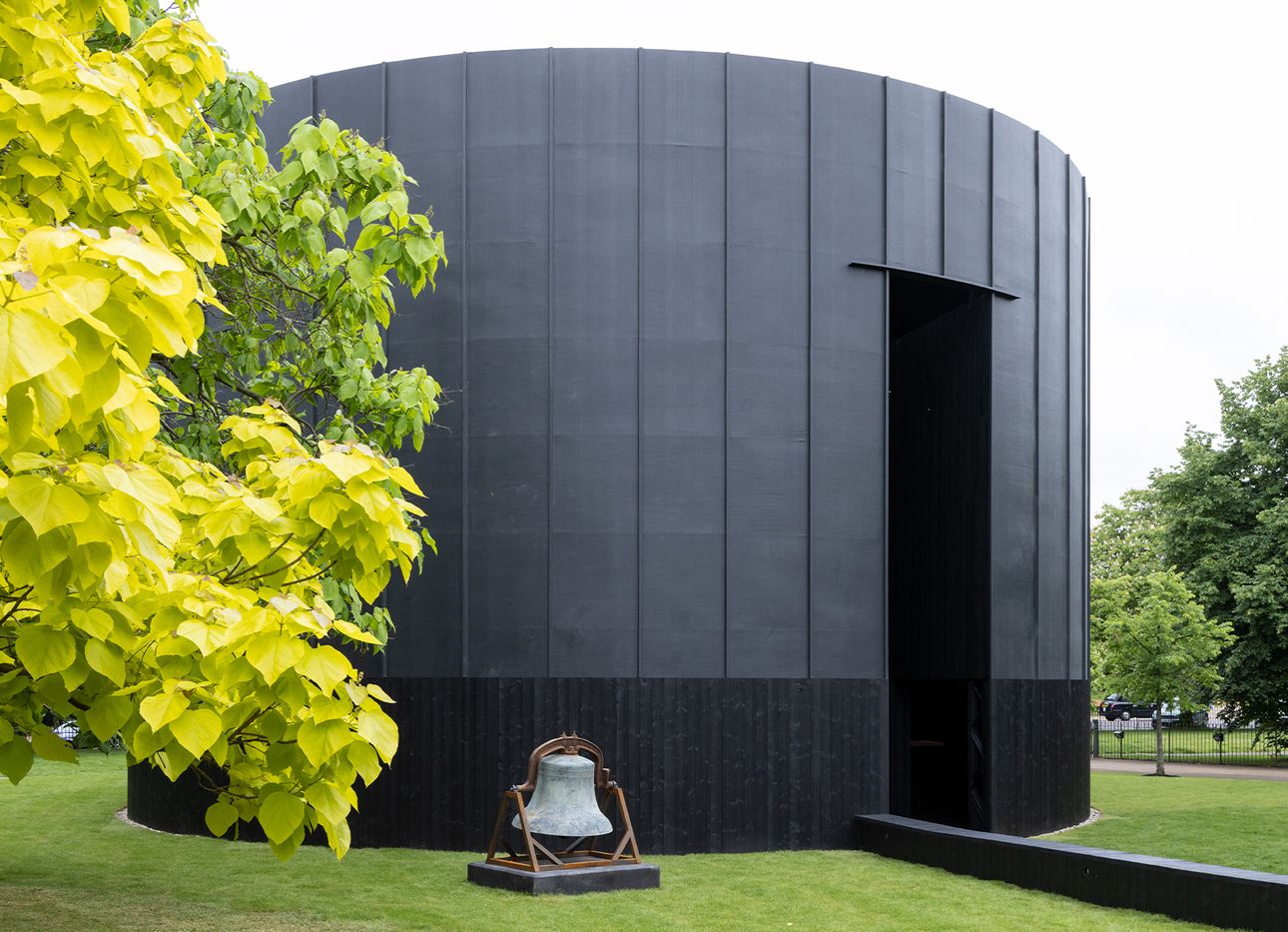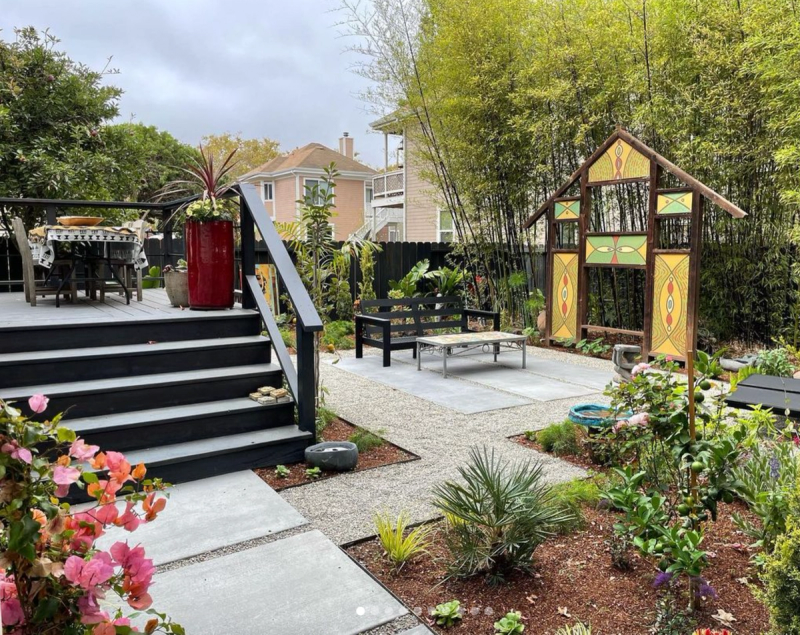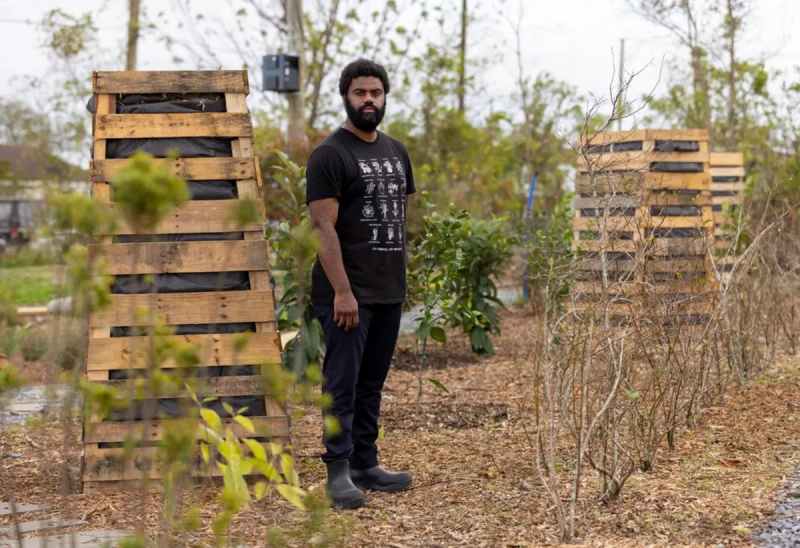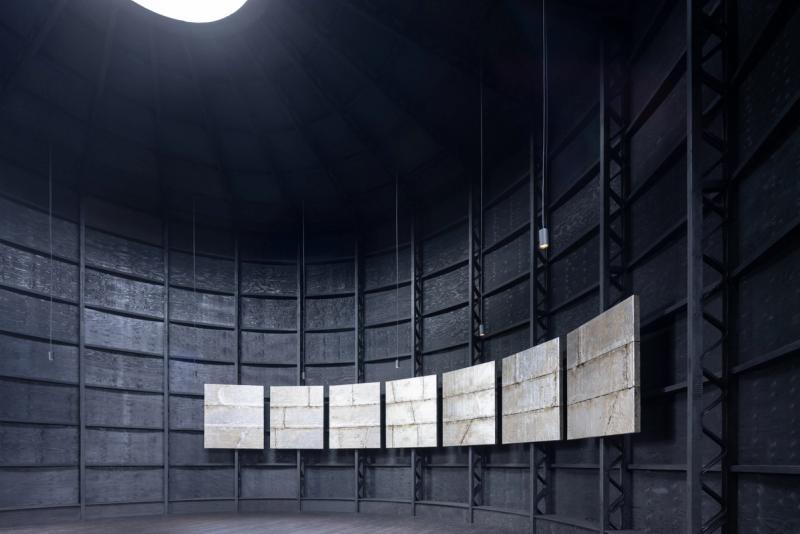
For Black Communities, These Gardens Double as Sites of Healing
For time immemorial gardens have served as spaces for rest, reflection, and communion with the natural world. But in today’s political climate, with its heightened confrontations of longstanding structural and historical inequality and racism, some gardens—created by and for Black communities—are now serving another, even more necessary and vital purpose: as valuable, active hubs for addressing certain imbalances and injustices, connecting with neighbors, and fostering community. As garden designer and landscape ethicist Benjamin Vogt has written, “Ultimately, every garden is an ideology.”
That statement rings true for a number of garden-focused initiatives created with Black healing in mind. One such project is Pine House Edible Gardens, a landscape design/build firm in Oakland, California, that focuses on combining native, ornamental plants with food-producing ones, resulting in dynamic spaces that feed the eye, stomach, and soul. Founded by landscape designer Leslie Bennet—a former World Health Organization staffer with a background in environmental justice, land-use law, and cultural property and preservation—the organization believes that everyone deserves access to gardens and space to grow them, and that the emotional benefits of engaging with gardens can provide useful insights for creating a more equitable society.

For clients in the Bay Area, the company’s services include creating and maintaining site-specific green spaces as well as floral arranging, beekeeping, and helping to preserve seasonal harvests by pickling, canning, or transforming them into jellies and jams. It routes portions of every fee received to its Black Sanctuary Gardens project, in which Bennet and her team create gardens for Black women and Black communities in and around Oakland. The result? Serene sanctuaries that double as vital Black gathering spaces. In the midst of gentrification and displacement of the area’s historically Black neighborhoods, it’s a particularly important effort.

The impulse to restore and support community is also behind New York–based artist Kevin Beasley’s ongoing flora-focused 1741 Forstall Street project in the predominantly Black Lower Ninth Ward of New Orleans. It began as a commission from the Prospect New Orleans art triennial, which invited Beasley to create a temporary work in the city; Beasley used the funds, along with some of his own, to buy a plot of overgrown land in the neighborhood, clear it, and plant a public garden that opened earlier this year with a cookout. (The neighborhood was devastated by Hurricane Katrina, and now has a poverty rate of more than 30 percent.) Beasley also installed a utility pole with functional LED lights and Wi-Fi—the only hotspot in the area—and devised places, such as pebbled pathways and grassy knolls, for people to meet and play. Eventually, the garden’s plants and fruit trees will provide fresh food for community use.
While Beasley had never been to the city before beginning the project, its ambitions resonate with his larger body of work, which explores ideas around Blackness, memory, and cultural and material histories. The artist has hired a local landscaping firm to maintain the property, and plans to regularly visit to interact with the locals and those who use it. In an interview about the garden earlier this year, Beasley expressed wanting it to “fold into the current,” making the space a vibrant part of an area that has long been underserved by city, state, and federal governments.

In London’s Kensington Gardens (through Oct. 16), this year’s Serpentine Pavilion, called “Black Chapel” and designed by Chicago-based artist Theaster Gates with architectural support from Adjaye Associates, demonstrates how spaces within gardens can facilitate essential encounters and community engagement. The structure itself draws on a kaleidoscope of sources: the bottle-shaped kilns of England’s Stoke-on-Trent, where numerous such ovens fill its industrial landscape; the beehive-shaped kilns of the Western United States; the round chapels of Rome’s San Pietro church; Roman tempiettos, or small circular temples; and traditional African architectural structures, including Cameroon’s Musgum mud huts and Uganda’s Kasubi Tombs. Ring shouts, voodoo circles, and the circular formations seen in several Afro-Brazilian dance forms also helped inform the building’s tall, cylindrical shape.
Conceived as a space for gathering and meditation, the pavilion features a suite of new tar paintings that Gates made using roofing techniques such as “torch down,” which involves using an open flame to heat and attach material to a surface. It’s a reference to his father, who worked as a roofer, and a nod toward the act of social transformation. A series of live events featuring artists, musicians, dancers, and poets will further animate the space through the summer and early fall, including a performance by the Choir of the London Oratory (Aug. 13, 3-4:30 p.m.). The ringing of a bronze bell, salvaged from a Catholic church on Chicago’s South Side and placed at the entrance of the space, signals the start of each presentation. “‘Black Chapel’ suggests that, in these times, there could be a space where one could rest from the pressures of the day and spend time in quietude,” Gates said in a statement. “I have always wanted to build spaces that consider the power of sound and music as a healing mechanism and emotive force that allows people to enter a space of deep reflection and deep participation.”
Gates’s project, as well as Beasley’s and Bennet’s, tap into a distinct and all-too-rare type of restoration that gardens can provide. For Black communities in particular, these spaces serve as quiet, humble reminders that humanity is part of a resilient network full of life. Within them, among the silence, the music, or the gentle rustle of plants, visitors can experience a version of space and time dedicated to wholeness.